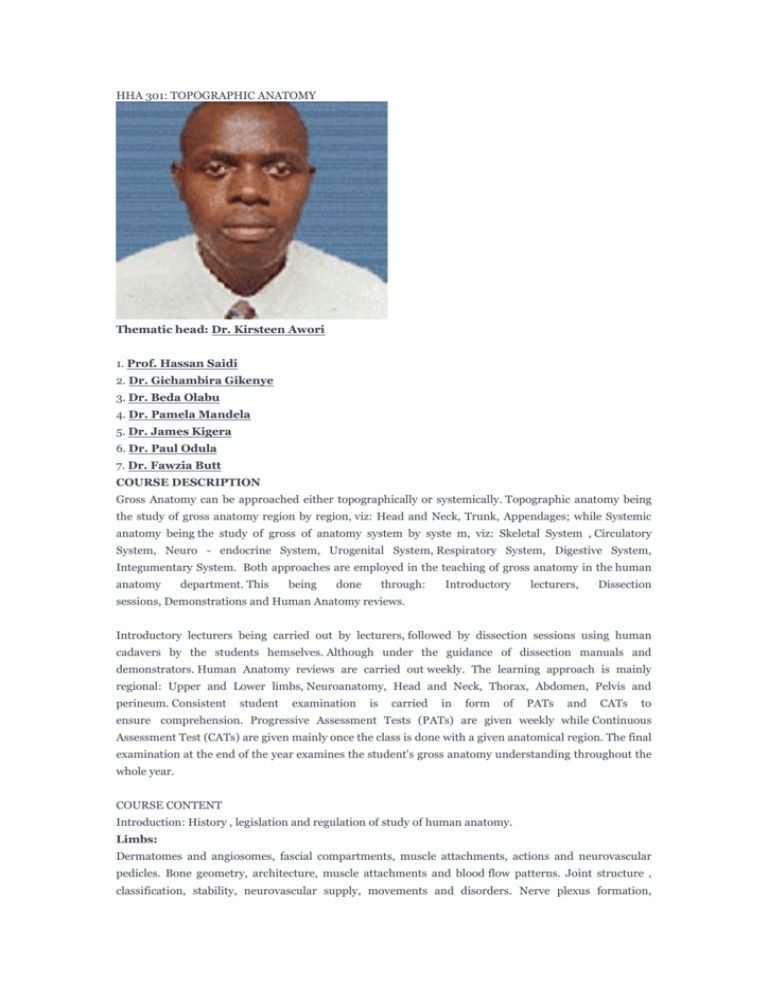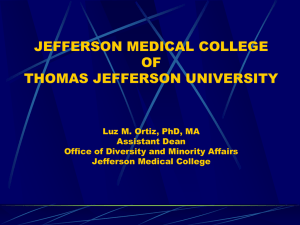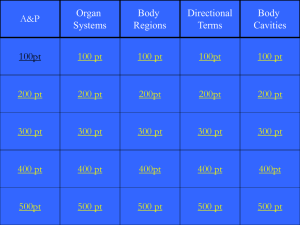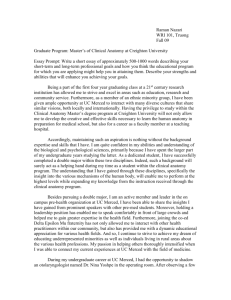HHA 301 - Department of Human Anatomy
advertisement

HHA 301: TOPOGRAPHIC ANATOMY Thematic head: Dr. Kirsteen Awori 1. Prof. Hassan Saidi 2. Dr. Gichambira Gikenye 3. Dr. Beda Olabu 4. Dr. Pamela Mandela 5. Dr. James Kigera 6. Dr. Paul Odula 7. Dr. Fawzia Butt COURSE DESCRIPTION Gross Anatomy can be approached either topographically or systemically. Topographic anatomy being the study of gross anatomy region by region, viz: Head and Neck, Trunk, Appendages; while Systemic anatomy being the study of gross of anatomy system by syste m, viz: Skeletal System , Circulatory System, Neuro - endocrine System, Urogenital System, Respiratory System, Digestive System, Integumentary System. Both approaches are employed in the teaching of gross anatomy in the human anatomy department. This being done through: Introductory lecturers, Dissection sessions, Demonstrations and Human Anatomy reviews. Introductory lecturers being carried out by lecturers, followed by dissection sessions using human cadavers by the students hemselves. Although under the guidance of dissection manuals and demonstrators. Human Anatomy reviews are carried out weekly. The learning approach is mainly regional: Upper and Lower limbs, Neuroanatomy, Head and Neck, Thorax, Abdomen, Pelvis and perineum. Consistent student examination is carried in form of PATs and CATs to ensure comprehension. Progressive Assessment Tests (PATs) are given weekly while Continuous Assessment Test (CATs) are given mainly once the class is done with a given anatomical region. The final examination at the end of the year examines the student's gross anatomy understanding throughout the whole year. COURSE CONTENT Introduction: History , legislation and regulation of study of human anatomy. Limbs: Dermatomes and angiosomes, fascial compartments, muscle attachments, actions and neurovascular pedicles. Bone geometry, architecture, muscle attachments and blood flow patterns. Joint structure , classification, stability, neurovascular supply, movements and disorders. Nerve plexus formation, branching and distribution. Artery course, landmarks and anastomoses. Boundaries, contents and applied anatomy of intermuscular spaces. Head: Skull bones, sutures and fontanelles. Growth and aging changes of the skull bones. Foramina and their contents. Muscle attachments and neurovascular relations. Weak points. Adaptive features of skull bones. Organs of special sensation. Cranial nerves exit/entry, relations, course and distribution. Neurovascular anatomy and muscles of scalp and face. Neck: Skin, fascia, triangles, vessels, nerves muscles and viscera. Thorax: Adaptive features of components of the wall. Neurovascular structures. Landmarks, parts and neurovascular supply of the pleura. Thoracic inlet and outlet. Anatomical features of individual viscera. Abdomen: Components and neurovascular supply of the wall. Peritoneum and related spaces. Topography of individual organs. Blood vessels, lymphatics and nerves. Pelvis and perineum: Components, neurovascular supply of wall. Pelvic peritoneum. Topographic features of organs, spaces and landmarks. Blood vessels, lymphatics and nerves






